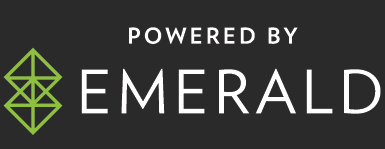By Zach Blume, Co-founder & President, Portal A
You know this already, but the Creator Economy is hot.
Brands are showering the space with investment. Social video ad spending has overtaken linear TV. Viewers spend more time on YouTube than on Netflix. Cannes, a symbol of exclusivity in the ad world, has transformed into a “festival of Creators.” Creators were a centerpiece of the presidential election.
I’m a long-time veteran of this space and I’ve had a first-row seat as our industry has gone from an internet sideshow to a $250 billion behemoth.
But heading into 2025, as more advertising dollars are poured into the industry than ever, we’re seeing marketers move away from brand storytelling and toward a scaled, transactional approach.
Media is stealing the show.
The majority of brand activations in our space now originate from the media side of the house versus the brand or the creative side. The primary objective is scale, sales, and eyeballs, over creative storytelling, brand building, and genuine connection. It’s illustrative that each major advertising holding company has been on an acquisition spree of influencer media agencies, with one recently selling for $500m.
For an industry with creativity at its core, it’s counterintuitive that brands aren’t approaching the space as a creative or brand opportunity. As viewers, we feel it. Social feeds are inundated with pro forma sponsorship reads that interrupt the content, creativity, and creators we’re there to watch:
“Thank you to X for sponsoring this video…”
“Use discount code X for 15% off your next order”
How did we get here? And what will we see in 2025? Let’s take a step back.
The 2010s were a heady time of innovation around how brands could reach viewers who were increasingly scrolling past or skipping through traditional ads. Creators offered a deep and direct connection with their fans while marketers brought resources to help elevate the work. Brands could reach a new audience in ways that were authentic instead of interruptive or overbearing.
Brands invested in bold new work – AT&T’s Summer Break, everything Casey Neistat did with Nike, and YouTube’s Rewind, to name a few. These were long-term collaborations and entertainment properties where the product or service was additive to the idea. New content formats, creative collaborations rooted in big ideas, and long-term partnerships became the mainstream.
In 2020, the tide turned. When marketers couldn’t get on set to produce new ads during the pandemic, they turned to influencers as the most direct line to their audience. Creators could produce content remotely and consumers were on their phones watching more social content than ever before. The dollars needed to find a home.
So marketers did what they felt was safe: they bought ad space against existing programming. Media buyers took the reigns and Creators were approached as ad units. The volume of media investment in the Creator Economy since this pivot has been staggering.
This departure from creativity and brand building in the Creator Economy has mirrored similar trends in traditional advertising, which just until recently, had been in its own programmatic winter.
The WSJ covered how “More Companies Are Hiring CMOs With Performance-Marketing Backgrounds,” tracking the rise of marketing leaders more focused on ROAS than cultural relevance. There has been a flurry of discussion around Nike and the value destruction that came with their investment in performance marketing at the expense of their brand.
But marketers are again moving up funnel. Brands like Airbnb are leading the way with brand storytelling, ditching performance and instead investing in bold campaigns. The CMO of Nestle recently said that “creativity comes first. Absolutely, 100%.” Examples like this in traditional advertising are everywhere.
To maximize impact in the Creator Economy in 2025, marketers should avoid the same mistake of investing in media and programmatic at the expense of their brand.
Scale has its place. But so does creativity and brand building. If you want to forge a deeper connection with your audience and build lasting brand loyalty, you invest in big ideas that capture attention and talent partnerships that are authentic and lasting.
Partnering with creators gives marketers the opportunity to connect with viewers in a deeper and more direct way than ever before. But only if you don’t repeat the same interruptive model that has sent people running away from advertising in the first place.
Creator marketing is the belle of the advertising ball, and heading into 2025, we sit at another crossroads. Will brands continue to focus their investment on scale and performance, or will there be a return to the type of creative storytelling that sets this space apart in the first place?
Here’s my advice for marketers looking ahead to 2025. First, approach Creator partnerships as a long-term brand investment not as a line item in a media budget. Second, empower your creative partners to bring you big ideas with Creators that audiences will love, rather than skip through.
If you do that, you can tap into what makes this space so powerful – the deep, parasocial connection Creators have with their fans and the ability for brands to reach audiences that tune out traditional advertising.
About the Author
Zach Blume is the Co-Founder and President of Portal A, an award-winning social content company.






